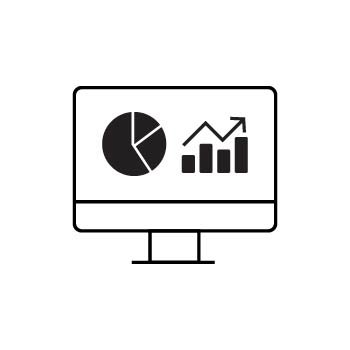Understanding Google Analytics and How to Use It
Google Analytics is a powerful tool that helps you see how visitors interact with your website. Whether you’re a photographer, small business owner, or marketer, these insights can help you improve user experience, track performance, and grow your online presence.
Please Note: Zibster is not affiliated with Google. Our Support Team can help you install your Google Analytics tracking tag. For questions about using Google Analytics, please contact Google Support.
Pro Tip
For More In-Depth Training with Google Analytics, check out Google Analytics Academy.
STEP ONE
Understand New Traffic vs. User Traffic
- New Traffic: Number of first-time visitors to your site.
- User Traffic: Total number of visitors, including both new and returning users.
Why This Matters: Shows if you’re attracting new visitors and keeping past visitors engaged. A healthy site has both.
STEP TWO
Learn What a “User” Is
A User is an individual who has started at least one session on your site during a specific time period. Each user is tracked with a unique identifier so Google can tell new visitors from returning ones.
Why This Matters: Helps you target content for loyal customers and convert new visitors into repeat clients.
STEP THREE
Know What a “User Session” Means
A Session is a group of actions a user takes on your site in a set time frame (page views, clicks, form submissions, purchases). By default, a session ends after 30 minutes of inactivity or at midnight.
Why This Matters: Shows how visitors move through your site so you can make navigation easier.
STEP FOUR
Track Average Engagement Time
Average Engagement Time measures how long visitors actively interact with your site.
Why This Matters: Longer engagement means visitors find your content useful. Short engagement may mean your content or design needs improvement.
STEP FIVE
Review Traffic Sources
Google Analytics shows where your visitors come from:
- Direct Traffic – Typed your URL or used a bookmark
- Referral Traffic – Clicked from another website
- Social Traffic – From social media platforms
- Organic Search Traffic – From search engines
- Paid Search Traffic – From paid ads
- Email Traffic – From email links
- Display Traffic – From banner/display ads
- Unassigned Traffic – Traffic that doesn’t fit other categories
Why This Matters: Helps you invest more in channels that work and improve underperforming ones.
STEP SIX
Check Geographic Breakdown by Location
Shows where your visitors are located.
Why This Matters: Allows you to target promotions and content to your most engaged regions.
STEP SEVEN
Monitor Page Views
Tracks which pages get the most visits.
Why This Matters: Popular pages can be promoted further; low-traffic pages may need updates or more promotion.
STEP EIGHT
Track Active Users Over Time
Shows how many people are on your site over a specific time period.
Why This Matters: Reveals traffic patterns, measures campaign success, and shows if interest is growing or declining.
STEP NINE
Analyze Users by Device
Breaks down traffic by desktop, mobile, and tablet.
Why This Matters: Ensures your site works well for the devices your audience uses most.


